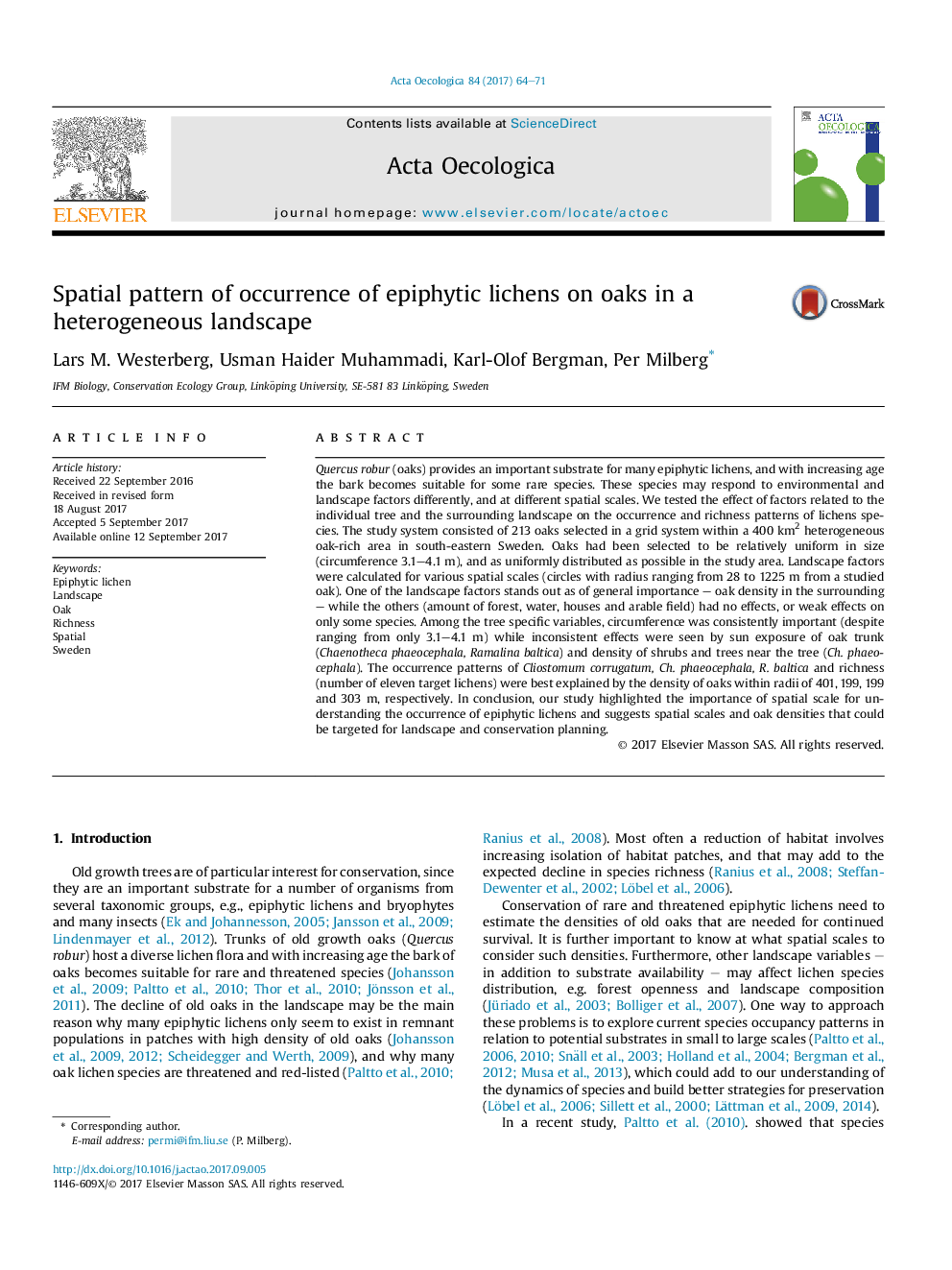| کد مقاله | کد نشریه | سال انتشار | مقاله انگلیسی | نسخه تمام متن |
|---|---|---|---|---|
| 5742496 | 1617688 | 2017 | 8 صفحه PDF | دانلود رایگان |
- We studied lichens on large oaks selected to be uniformly distributed within a study area.
- One landscape factor - oak density - stood out as being important, while the others four were not.
- Despite ranging from only 3.1-4.1Â m, oak circumference was consistently important.
- Occurrence of three species as well as richness were best explained by density of oaks within 200-500Â m.
Quercus robur (oaks) provides an important substrate for many epiphytic lichens, and with increasing age the bark becomes suitable for some rare species. These species may respond to environmental and landscape factors differently, and at different spatial scales. We tested the effect of factors related to the individual tree and the surrounding landscape on the occurrence and richness patterns of lichens species. The study system consisted of 213 oaks selected in a grid system within a 400 km2 heterogeneous oak-rich area in south-eastern Sweden. Oaks had been selected to be relatively uniform in size (circumference 3.1-4.1Â m), and as uniformly distributed as possible in the study area. Landscape factors were calculated for various spatial scales (circles with radius ranging from 28 to 1225Â m from a studied oak). One of the landscape factors stands out as of general importance - oak density in the surrounding - while the others (amount of forest, water, houses and arable field) had no effects, or weak effects on only some species. Among the tree specific variables, circumference was consistently important (despite ranging from only 3.1-4.1Â m) while inconsistent effects were seen by sun exposure of oak trunk (Chaenotheca phaeocephala, Ramalina baltica) and density of shrubs and trees near the tree (Ch. phaeocephala). The occurrence patterns of Cliostomum corrugatum, Ch. phaeocephala, R. baltica and richness (number of eleven target lichens) were best explained by the density of oaks within radii of 401, 199, 199 and 303Â m, respectively. In conclusion, our study highlighted the importance of spatial scale for understanding the occurrence of epiphytic lichens and suggests spatial scales and oak densities that could be targeted for landscape and conservation planning.
Journal: Acta Oecologica - Volume 84, October 2017, Pages 64-71
